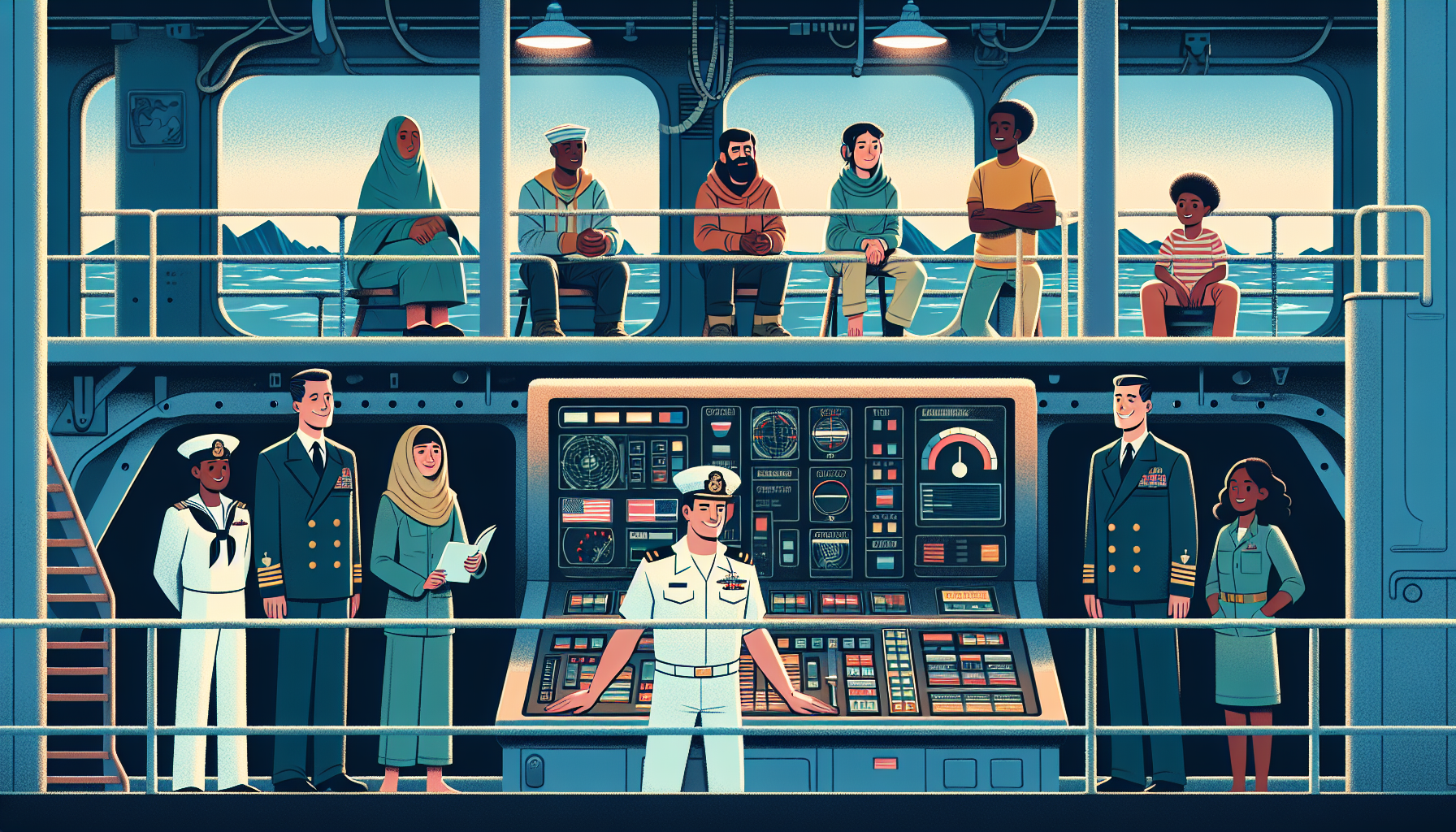Definition
The term “Deck Status Light” in military operations refers to a light-based signaling system used primarily on aircraft carriers. These lights provide critical information about the status of the flight deck, such as whether it’s safe for aircraft to take off or land. The system enables clear and safe communication between air traffic controllers and pilots, even in adverse weather conditions or during nighttime operations.
Key Takeaways
- ‘Deck status light’ is a component of naval ship communication, notably on aircraft carriers. It is used to give visual signals to pilots and crew regarding the operational status of the flight deck.
- Deck status lights can display various colors, each with a distinct meaning. For example, a red light indicates that the deck is not safe for takeoff or landing, green light signifies safe conditions for takeoff and landing, and amber usually means the deck is fouled or being prepared for aircraft handling.
- The usage of ‘Deck status light’ significantly contributes to the operational efficiency and safety measures on the aircraft carrier. It provides quick and clear communication to crew members, thereby preventing accidents and confusion during flight operations.
Importance
Deck status lights hold significant importance in military operations as they serve as a critical means of communication, particularly on aircraft carriers.
These lights provide essential information about the operational state of the deck, swiftly communicating to all personnel whether it is safe to perform key aircraft functions such as landing or takeoff.
The lights’ color-coded system – red, yellow, or green – helps in instant understanding, thereby ensuring efficiency and coordination among the team, reducing the chance of errors, and improving overall safety.
Thus, deck status lights are crucial for smooth, effective, and safe execution of military operations.
Explanation
Deck status lights are a crucial component in the operational procedures of military vessels, such as aircraft carriers. They serve the purpose of communicating essential operational information to personnel on deck and pilots preparing for launch or landing.
These lights indicate various states of the flight deck, changing according to the operations being conducted. For example, red lights typically signify that the deck is not safe for landing while green lights indicate safe landing conditions.
Not only do deck status lights aid in maintaining safety procedures, but they also enhance operational efficiency on the ship’s flight deck. They enable control tower operators to convey information quickly and clearly without requiring extra radio communication.
Additionally, they can be visible from great distances, supporting pilots in understanding the deck conditions well ahead of time. Through these simple yet effective lighting systems, a seamless line of communication between the flight deck, control tower, and incoming or outgoing aircraft can be established, thus vitalizing efficient and safe military operations.
Examples of Deck status light
Deck Status Light is a term used in military operations, particularly in naval operations, to denote the color-coded system which indicates whether deck facilities, such as those on an aircraft carrier, are safe for takeoff, landing, and other operations. Here are three real-world examples:
USS Dwight D. Eisenhower (CVN-69): USS Dwight D. Eisenhower is a Nimitz-class aircraft carrier currently in service with the US Navy. This massive vessel uses deck status lights to efficiently manage aircraft operations. Green lights indicate that it’s safe for aircraft to take off or land, while red lights signal that operations must be halted.
HMS Queen Elizabeth (R08): The HMS Queen Elizabeth is the lead ship of the Queen Elizabeth class of aircraft carriers, the largest warships ever built for the Royal Navy of the United Kingdom. Deck status lights play a crucial role in the coordinated operations of the F-35B Lightning II fighters, Apache AH Mk 1 helicopters, and other aircraft that the ship carries.
USS George Washington (CVN-73): Another Nimitz-class aircraft carrier of the United States Navy, USS George Washington utilizes deck status lights to handle the operations of its carrier air wing – an operational naval aviation organization composed of several aircraft squadrons and detachments. This can involve the management of multiple types of aircraft including fighters, airborne early warning and control aircraft, and helicopters. The deck status lights provide necessary and immediate information to personnel, ensuring safe and efficient operations.
FAQs on Deck Status Light
What is a Deck Status Light?
A Deck Status Light is a key component in Naval communication, primarily used on the flight deck of an aircraft carrier. This system allows for non-verbal communication between flight deck crews and pilots prior to takeoff or landing.
How does a Deck Status Light function?
Deck Status Lights function by displaying different signals. Depending on these signals, the sailors in the flight tower, as well as on the deck, interpret necessary actions for aircraft operation.
What is the significance of Deck Status Light colors?
The colors of a Deck Status Light traditionally include green, amber, and red. Each color signifies different stages of takeoff or landing readiness. For instance, green typically means the deck is clear for either takeoff or landing.
How is the Deck Status Light operated?
The Deck Status Light system is controlled from the ship’s Primary Flight Control center or “Pri-Fly”. The air boss or a designated person manipulates the lights according to the ongoing deck operations.
Is the Deck Status Light used in all military operations?
No, the Deck Status Light is not used in all military operations. It is predominantly employed in operations involving naval aircraft carriers, where continuous air operation is necessary and verbal communication may not always be effective.
Related Military Operation Terms
- Claim Submission
- Benefits Processing
- VA Appeal Status
- Veterans Benefits Management System (VBMS)
- VA Claims Intake Program
Sources for More Information
- U.S. Navy Official Website: Extensive information about naval operations, including deck status lights, could be found in the U.S. Navy’s official website.
- Naval History and Heritage Command: This website offers a wealth of historical data regarding naval procedures, including potential information on the use of deck status lights.
- Encyclopedia Britannica: A long-standing reference source, Britannica might have general entries regarding deck status lights within its articles on naval and military operations.
- Global Security: This nonprofit organization provides in-depth information on a wide range of security issues, including military operations and intelligence, which may cover the topic in question.
 Benefits.com Advisors
Benefits.com Advisors
With expertise spanning local, state, and federal benefit programs, our team is dedicated to guiding individuals towards the perfect program tailored to their unique circumstances.
Rise to the top with Peak Benefits!
Join our Peak Benefits Newsletter for the latest news, resources, and offers on all things government benefits.





















